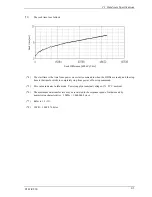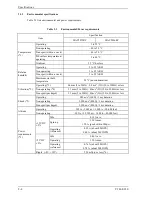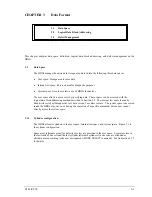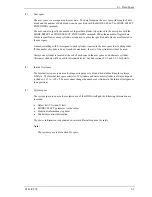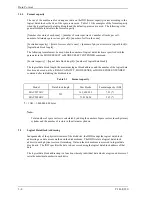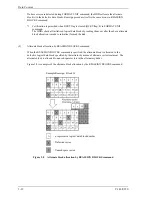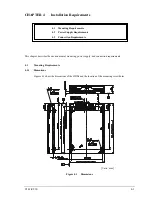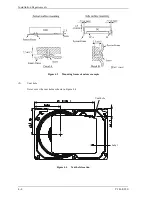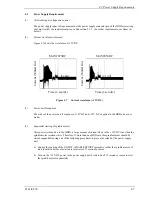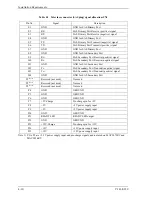
Data Format
3-10
C141-E230
3.3 Defect
Management
3.3.1 Defect
list
Information of the defect location on the disk is managed by the defect list. The following are defect
lists which the HDDs manage.
•
P list (Primary defect list): This list consists of defect location information available at the disk
drive shipment and is recorded in a system space. The defects in this list are permanent, so the
INIT must execute the alternate block allocation using this list when initializing the disk.
•
D list (Data defect list): This list consists of defect location information specified in a FORMAT
UNIT command by the INIT at the initialization of the disk. This information is recorded in the
system space of the disk drive as the G list. To execute the alternate block allocation, the
FORMAT UNIT command must be specified.
•
G list (Growth defect list): This list consists of defective logical data block location information
specified in a REASSIGN BLOCKS command by the INIT, information on defective logical data
blocks assigned alternate blocks by means of the HDD automatic alternate block allocation,
information specified as the D list, and information generated as the C list. They are recorded in
the system space on the disk drive.
The INIT can read out the contents of the P and G lists by the READ DEFECT DATA command.
3.3.2
Alternate block allocation
The alternate data block is allocated to a defective data block (= sectors) in defective sector units by
means of the defect management method inside the HDDs.
The INIT can access all logical data blocks in the user space, as long as there is no error.
Spare sectors to which alternate blocks are allocated can be provided in "alternate cylinders". See
Subsection 3.1.2 for details.
The INIT can specify the size and area for spare sectors by the MODE SELECT command at the
time of the initialization of the disk.
Both of the following are applicable to the alternate block allocation.
•
Sector slip treatment: Defective sectors are skipped and the logical data block corresponding to
those sectors is allocated to the next physical sectors. This treatment is made on the same cell as
the defective sector's and is effective until all spare sectors in that cell are used up.
•
Alternate sector treatment: The logical data block corresponding to defective sectors is allocated
to unused spare sectors in the alternate cylinder.
The alternate block allocation is executed by the FORMAT UNIT command, the REASSIGN
BLOCKS command, or the automatic alternate block allocation. Refer to Chapter 4 “Command
Specifications” and Subsection 5.3.2 “Auto alternate block allocation processing” of the Fibre
Channel Interface Specifications for details of specifications on these commands. The logical data
block is allocated to the next physically continued sectors after the above sector slip treatment is
made. On the other hand, the logical data block is allocated to spare sectors which are not physically
consecutive to the adjacent logical data blocks. If a command which processes several logical data
blocks is specified, the IDD processes those blocks in ascending order of logical data block.
Summary of Contents for MAY2036RC Product/
Page 1: ...C141 E230 01EN MAY2073RC MAY2036RC HARD DISK DRIVES PRODUCT MAINTENANCE MANUAL ...
Page 10: ...This page is intentionally left blank ...
Page 16: ...This page is intentionally left blank ...
Page 54: ...This page is intentionally left blank ...
Page 90: ...This page is intentionally left blank ...
Page 92: ...This page is intentionally left blank ...
Page 93: ......
Page 94: ......


